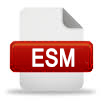

CLC number:
On-line Access: 2024-08-27
Received: 2023-10-17
Revision Accepted: 2024-05-08
Crosschecked: 0000-00-00
Cited: 0
Clicked: 3769
Citations: Bibtex RefMan EndNote GB/T7714
Dianlong GE, Xue ZOU, Yajing CHU, Jijuan ZHOU, Wei XU, Yue LIU, Qiangling ZHANG, Yan LU, Lei XIA, Aiyue LI, Chaoqun HUANG, Pei WANG, Chengyin SHEN, Yannan CHU. Analysis of volatile organic compounds in exhaled breath after radiotherapy[J]. Journal of Zhejiang University Science B,in press.Frontiers of Information Technology & Electronic Engineering,in press.https://doi.org/10.1631/jzus.B2100447 @article{title="Analysis of volatile organic compounds in exhaled breath after radiotherapy", %0 Journal Article TY - JOUR
放射治疗后呼气中挥发性有机物的分析关键词组: Darkslateblue:Affiliate; Royal Blue:Author; Turquoise:Article
Reference[1]BentzenSM, 2006. Preventing or reducing late side effects of radiation therapy: radiobiology meets molecular pathology. Nat Rev Cancer, 6(9):702-713.  [2]BroinPÓ, VaitheesvaranB, SahaS, et al., 2015. Intestinal microbiota-derived metabolomic blood plasma markers for prior radiation injury. Int J Radiat Oncol Biol Phys, 91(2):360-367.  [3]ChungYH, TsaiCK, WangCC, et al., 2017. Early response monitoring following radiation therapy by using [18F]FDG and [11C]acetate PET in prostate cancer xenograft model with metabolomics corroboration. Molecules, 22(11):1946.  [4]DavidovichN, DiPaoloBC, LawrenceGG, et al., 2013. Cyclic stretch-induced oxidative stress increases pulmonary alveolar epithelial permeability. Am J Respir Cell Mol Biol, 49(1):156-164.  [5]de VietroN, ArestaA, RotelliMT, et al., 2020. Relationship between cancer tissue derived and exhaled volatile organic compound from colorectal cancer patients. Preliminary results. J Pharm Biomed Anal, 180:113055.  [6]GambhirKK, McMenamyRH, WatsonF, 1975. Positions in human serum albumin which involve the indole binding site. Sequence of 107-residue fragment. J Biol Chem, 250(17):6711-6719.  [7]HachadorianRL, BruzaP, JermynM, et al., 2020. Imaging radiation dose in breast radiotherapy by X-ray CT calibration of Cherenkov light. Nat Commun, 11:2298.  [8]KirilovaEM, KalninaI, ZvaguleT, et al., 2011. Fluorescent study of human blood plasma albumin alterations induced by ionizing radiation. J Fluoresc, 21(3):923-927.  [9]LinJ, 2004. Too much short chain fatty acids cause neonatal necrotizing enterocolitis. Med Hypotheses, 62(2):291-293.  [10]LongPM, TigheSW, DriscollHE, et al., 2015. Acetate supplementation as a means of inducing glioblastoma stem-like cell growth arrest. J Cell Physiol, 230(8):1929-1943.  [11]Losada-BarreiroS, Bravo-DíazC, 2017. Free radicals and polyphenols: the redox chemistry of neurodegenerative diseases. Eur J Med Chem, 133:379-402.  [12]McKelveyKJ, HudsonAL, BackM, et al., 2018. Radiation, inflammation and the immune response in cancer. Mamm Genome, 29(11):843-865.  [13]NakajimaT, 2015. Roles of sulfur metabolism and rhodanese in detoxification and anti-oxidative stress functions in the liver: responses to radiation exposure. Med Sci Monit, 21:1721-1725.  [14]PhillipsM, ByrnesR, CataneoRN, et al., 2013. Detection of volatile biomarkers of therapeutic radiation in breath. J Breath Res, 7(3):036002.  [15]PopaC, Maia BratuA, PetrusM, 2020. Special issue “applications of photoacoustic spectroscopy”. Molecules, 25(21):5116.  [16]ReisenauerCJ, BhattDP, MittenessDJ, et al., 2011. Acetate supplementation attenuates lipopolysaccharide-induced neuroinflammation. J Neurochem, 117(2):264-274.  [17]SemenzaGL, 2011. Oxygen sensing, homeostasis, and disease. N Engl J Med, 365(6):537-547.  [18]VaksVL, DomrachevaEG, SobakinskayaEA, et al., 2012. Using the methods and facilities of nonsteady-state spectroscopy of the subterahertz and terahertz frequency ranges for noninvasive medical diagnosis. J Opt Technol, 79(2):66-69.  [19]WangCS, DongR, WangXY, et al., 2014. Exhaled volatile organic compounds as lung cancer biomarkers during one-lung ventilation. Sci Rep, 4:7312.  [20]ZhongJ, RajaramN, BrizelDM, et al., 2013. Radiation induces aerobic glycolysis through reactive oxygen species. Radiother Oncol, 106(3):390-396.  Journal of Zhejiang University-SCIENCE, 38 Zheda Road, Hangzhou
310027, China
Tel: +86-571-87952783; E-mail: cjzhang@zju.edu.cn Copyright © 2000 - 2025 Journal of Zhejiang University-SCIENCE | ||||||||||||||



 ORCID:
ORCID:
Open peer comments: Debate/Discuss/Question/Opinion
<1>